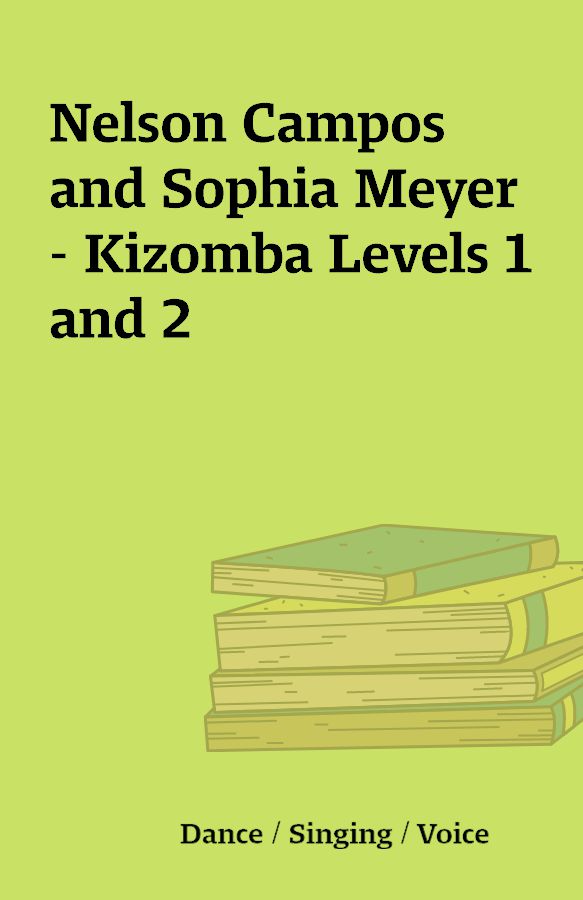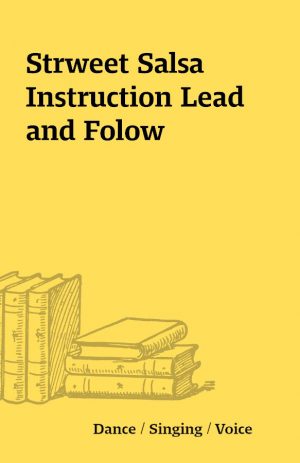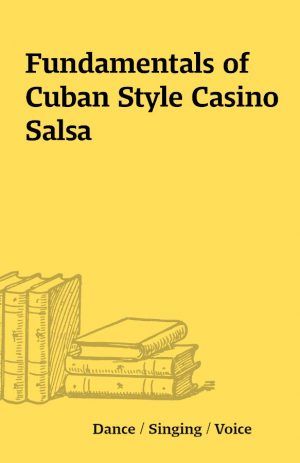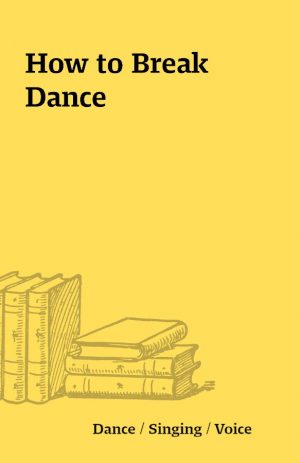Nelson Campos and Sophia Meyer – Kizomba Levels 1 and 2
Nelson Campos and Sophia Meyer – Kizomba Levels 1 and 2 [1 DVD – VOB]
[1 DVD – VOB]
Description
A couple are dancing, cheek to cheek. Their bodies lean in towards each other as their feet weave in intimate conversation; his hand presses against her back, tacitly signalling the next move. It looks like a tango, except that the way the dancers’ hips sway and their bodies rock is unmistakeably African.This is kizomba, and it’s the latest trend to sashay across London’s dancefloors. Kizomba originated in Angola in the ’80s but wasn’t really seen in the UK until a few years ago. Recently, however, its profile has soared, thanks to dancer and teacher Iris de Brito. De Brito is a native Angolan, who came to London more than a decade ago. Trained in ballet, jazz and contemporary dance, she was a fixture on the salsa scene before having the idea of introducing kizomba to the wider world. The word ‘kizomba’ means ‘party’ in the Angolan language Kimbundo, and it’s danced to music of the same name, a fusion of French Caribbean zouk and Angolan semba. The dance shares the same roots, although that probably doesn’t mean much to an English audience.’The first time I started advertising kizomba I called it Afro-tango,’ says de Brito. ‘I hate putting things in boxes but it’s a way for people to visualise the dance. The way we move has a lot to do with tango, but it’s not as strict in terms of body movement, which is where the African side has an influence, with the undulation of the body.’ Kizomba is more laid back than tango, and more intimate, slow and sensual than salsa. It’s sexy, but in an effortless way.’I like the connection you have when you’re dancing with somebody,’ says de Brito. ‘It’s a little bit more interior, it’s not so much about showing off. The connection is closer and more personal, without being seedy.’Kizomba fans in London are an eclectic bunch. Doctors, engineers and financial analysts are among the mix at Kizomba UK’s regular Thursday night events. ‘It’s a social dance, anybody can do it if they’re taught properly,’ says de Brito, adding, ‘It’s going to open the door to Angolan culture.’For de Brito, honouring kizomba’s heritage is important. Having not been back to Angola for more than 15 years (three decades of civil war have made it difficult and dangerous to travel there) this connection with her homeland is a vital one, and she’s keen to see the dance form gets the respect it deserves.To that end she’s currently creating an official kizomba syllabus and teaching at her Studio Afro Latino in Hackney as well as at Kizomba UK’s Thursday club nights. This Friday she’ll be at monthly salsa night El Grande in Vauxhall, along with guest dancers Paula Loureiro and Ricardo Sousa from Portugal. All of which means plenty of excuses to put on your dancing shoes.WHAT IS KIZOMBA?Existing since the 80s, Kizomba is an African dance that, in recent years, has won the heart of many pairs dancing in clubs and discos around the world. With its own very particular steps, rhythms and music, who knows how to dance Kizomba doesn’t want another thing and who do not know, just wants to learn! Kizomba is a term that derives from another Angolan terminology “Kimbundo” which means “party”. Kizomba as we know it today has been built from the merger between various genres of music and dance steps, being a real mixture of dance styles. It is impossible to speak about Kizomba without speaking in the traditional dances that preceded and influenced it: Semba (the predecessor of Samba), Zouk (from the islands Antilles), Coladeira (from Cape Verde), not forgetting the big contribution to the solidification of Kizomba that came from Tango and Merengue.The BOOMWhen hearing the traditional music as Semba and Zouk, the younger generations of Angola felt that something was missing – a modern and sensual touch. The result was the composition of a slower and very sensual pace: Kizomba as we know today. Explosive and contagious, Kizomba conquered the world as a sound that stays in the ear and as a dance that seduces your soul. Currently, Kizomba is very popular in Portugal, England, France, Holland, and spreading fast all around the world.Review: Kizomba Levels 1 and 2 with Nelson Campos and Sophia MeyerI’ll be honest, this whole Kizomba craze thats sweeping the nation at the moment, has been crazy to watch as it starts to not only grow but evolve.As a salsa dancer, i haven’t really got my head around the dance yet so i decided to have a look at a DVD to see if it made more sense!Nelson and Sophia start by explaining about what the dance is and where it evolves from. They then take you through each step, demonstrating first and then breaking down both the ladies and mens steps.Both of their instruction technique is very easy to follow and i found it very easy to pick up the steps after only watching them once!Nelson and Sophia make this DVD both easy to follow and enjoyable to watch. I think this DVD would be a useful aid for a complete beginner and the seasoned Kizomba dancer looking either for a refresher or to progress onto the next stage.Keep your eyes peeled, you never know, you might see this seasoned salsa dancer busting some Kizomba moves out there sometime soon!
You must be logged in to post a review.






Reviews
There are no reviews yet.